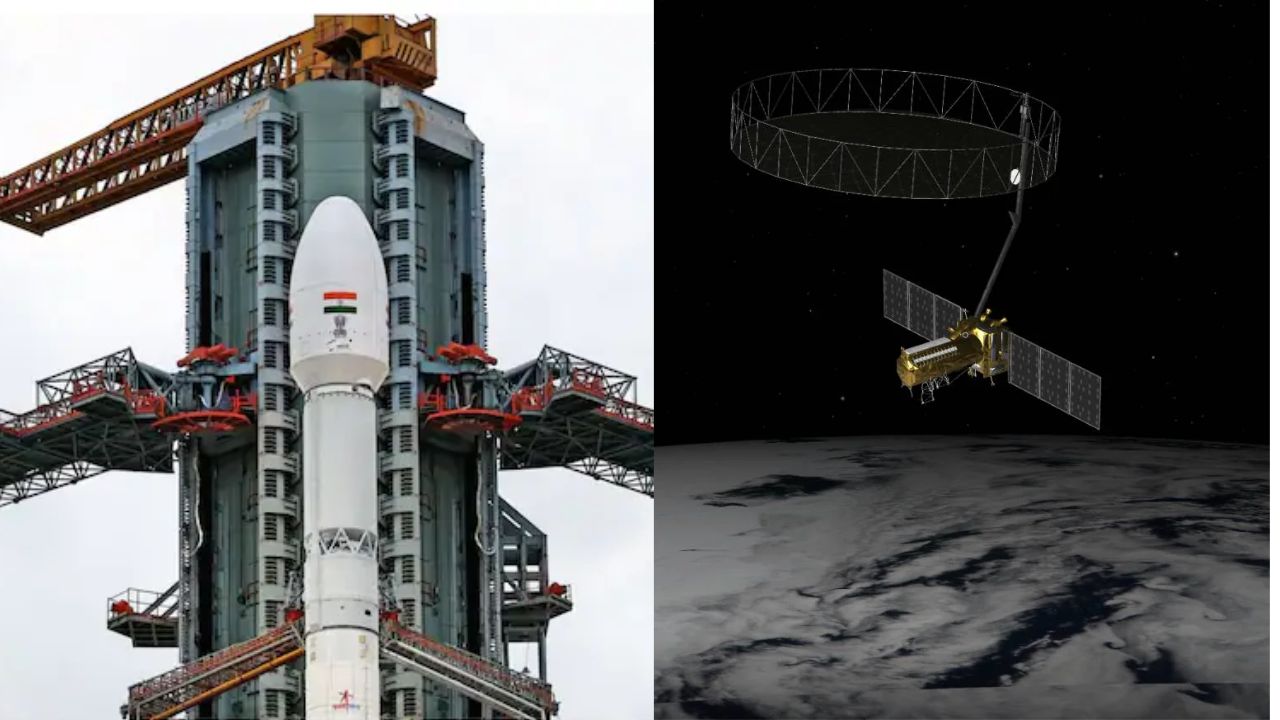 English
English

A joint mission of NASA and ISRO called NISAR (NASA-ISRO Synthetic Aperture Radar) will be launched from the Satish Dhawan Space Centre (SDSC SHAR) in Andhra Pradesh’s Sriharikota at 17:40 hours IST. The satellite will use two different frequencies (NASA’s L-band and ISRO’s S-band), which will allow it to scan the entire Earth in 12 days while capturing subtle and accurate images of the planet in all conditions

What is NISAR mission?
New Delhi: The Indian Space Research Organization (ISRO) and the US space agency NASA have jointly prepared a historic mission named NISAR (NASA-ISRO Synthetic Aperture Radar).
This satellite will be launched from Satish Dhawan Space Center in Sriharikota today and will change the way the Earth is monitored. Its cost is around Rs 12,500 crore (1.5 billion dollars), in which India's contribution is Rs 788 crore.
Features of NISAR: The world's first dual-frequency radar satellite
NISAR is the first satellite in the world that will use two different radar frequencies (NASA's L-band and ISRO's S-band). This technology can also capture the subtle movements of the Earth's surface and below it. Be it clouds, dark night, or dense forest, NISAR can take accurate pictures of the Earth in every situation. This satellite will scan the entire earth every 12 days and can track activities up to 4 millimeters, which will be helpful in predicting natural disasters like earthquakes, volcanoes, and landslides.
Why is NISAR important for India?
Help in disaster management
This satellite will give advance warning of disasters like floods, earthquakes, and tsunamis.
It will prove effective in preventing tragedies like the 2001 Gujarat earthquake and the 2004 tsunami.
Agriculture and water resource management
It will measure soil moisture and give farmers accurate information about irrigation.
It will track land subsidence (like in Delhi-NCR) caused by excessive exploitation of groundwater.
Eye on climate change
It will measure the speed of melting of Himalayan glaciers, which will help in estimating the water level of rivers.
An example of global partnership
NISAR is the result of a 10-year partnership between India and the US. ISRO has provided the satellite bus and S-band radar, while NASA has provided the L-band radar and a 12-meter antenna. This mission establishes India's space technology on the global stage.
Stay tuned to Dynamite News for further updates.
No related posts found.